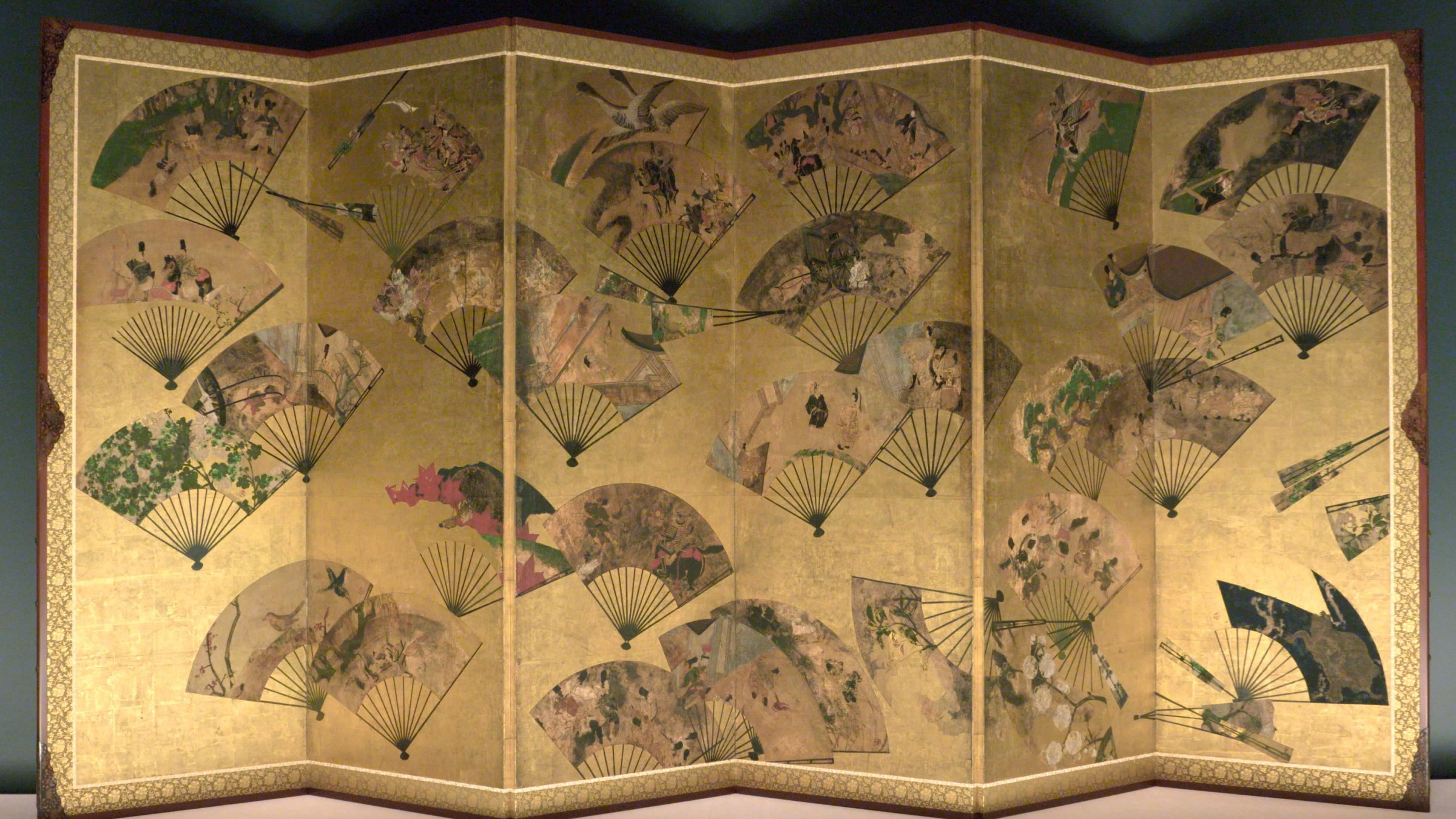Introduction
For this folding screen, Tawaraya Sōtatsu borrowed scenes from an ancient handscroll that narrates the founding of the Kitano Shrine in Kyoto and painted them on dozens of fans strewn across the surface. Unlike the original handscroll—in which events unfold one scene at a time in chronological order—here, all the episodes appear at once, and viewers can choose any order in which to view them.
As James Ulak, NMAA’s former senior curator of Japanese art, observes, when Sōtatsu broke up the sequence of the legend, he played with the idea of linear time. Another art form that plays with time is film, where editing is used to reorder a sequence of events. Depicting fans on a folding screen in this way is also a kind of collage, in which various images are glued to a background and combined to create a new work of art. In the West, both the concept of playing with time and the technique of collaging are associated with “modernism,” which began in the late nineteenth century. Could the Scattered Fans folding screen, painted in the early seventeenth century, be modern?
